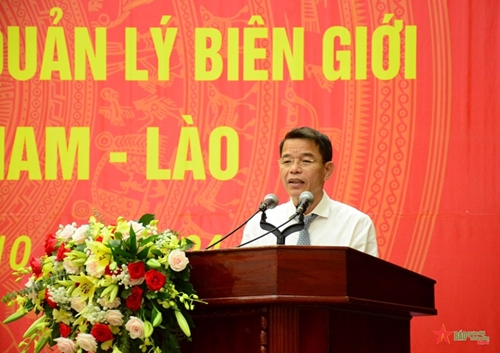The event was jointly organized by the Party Central Committee’s Commission for Information and Education, the Quang Nam provincial Party Committee, the Ministry of Industry and Trade, and the Vietnam Border Guard Command, with the participation of nearly 250 delegates from 10 provinces bordering Laos.
    |
 |
|
Deputy Head of the Party Central Committee’s Commission for Information and Education Vu Thanh Mai speaks at the event. |
The conference aimed to continue to popularize and affirm the Party and State's guidelines, policies and strategies on building a Vietnam-Laos borderline of peace, stability and sustainable development, while contributing to encouraging functional forces and people in border localities to accomplish the task of land border management and protection.
Speaking at the event, Secretary of the provincial Party Committee Luong Nguyen Minh Triet shared that over the past years, the provincial authorities and sectors have given a priority to the land border management work, obtaining important results.
Vietnam’s Quang Nam and Laos’ Sekong provinces have effectively implemented a model of twinned ties between villages on both sides of the shared borderline, contributing to deepening close and familiar ties between border communities of the two countries and supporting each other in socio-economic development.
At the conference, participants discussed contents related to practical contribution of territorial, border work to the building and protection of the country on Vietnam-Laos land border; practices and experiences in handling arising issues in national border management on the Vietnam - Laos land border of the border guard force over the past time; orientations for border trade development on Vietnam - Laos land border.
In his remarks, Deputy Head of the Party Central Committee’s Commission for Information and Education Vu Thanh Mai required sectors and localities in border areas, in the time to come, to continue to renovate and diversify the content and forms of dissemination work; increase the application of information technology, digital transformation, focus on information dissemination in the languages of ethnic groups living in border areas and external dissemination on land border work; and further promote the obtained positive results in task implementation, ensure coordination between forces in dissemination and education work in a timely and comprehensive manner, to name but a few.
Translated by Quynh Oanh